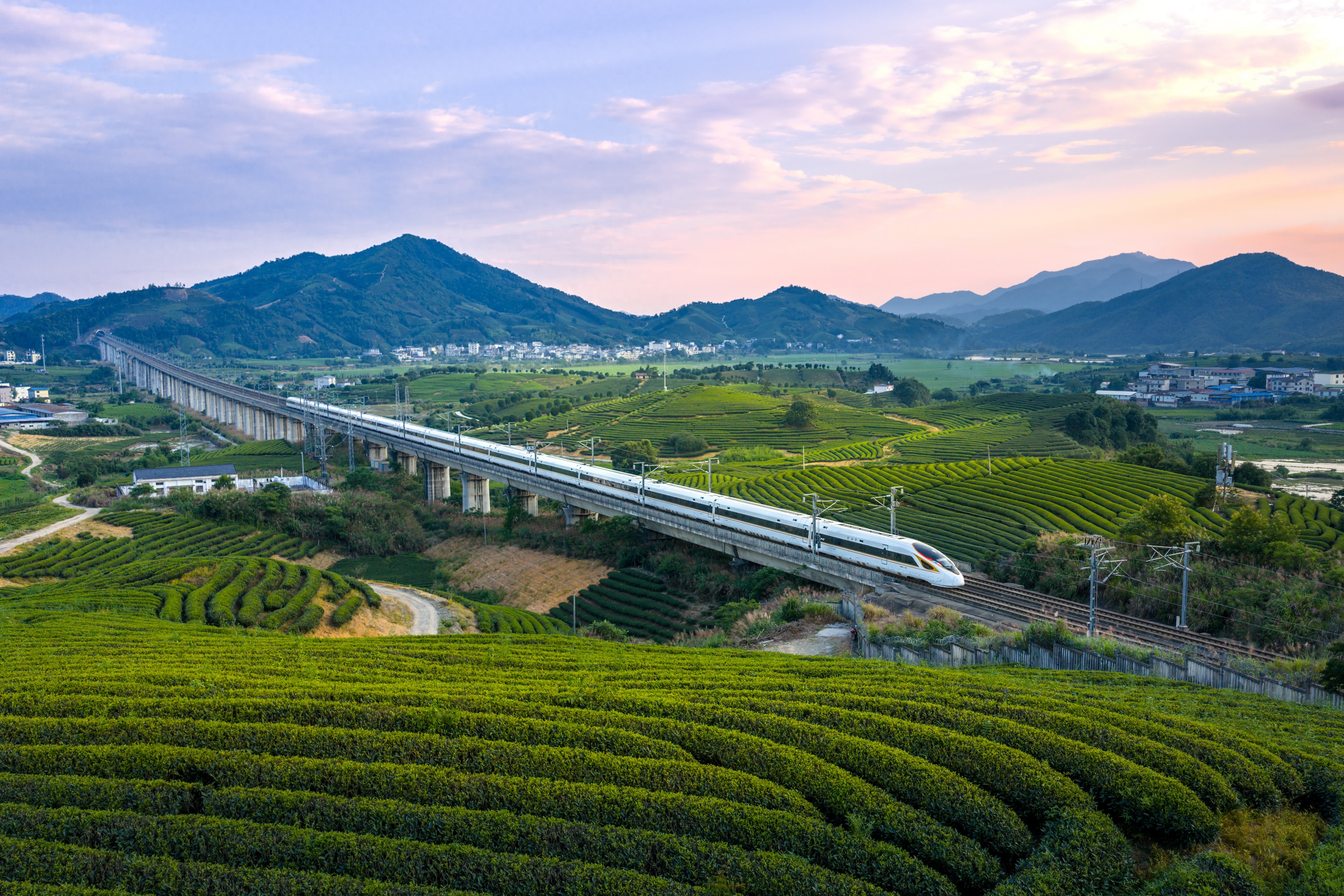Reference News Network, July 31 report: The German website "Munich Courier" published an article titled "China's Railway Revolution Makes Germany Look Outdated" on July 28. The reporter is Sven Hauberg. The following is the translated text:
At exactly 9 a.m., the high-speed train numbered G5 departed from Beijing South Station. This train crosses vast rural areas and several cities with populations of over a million that are little known outside China, finally arriving at Shanghai, about 1,300 kilometers away.
The second-class ticket costs approximately 80 euros (1 euro is approximately 8.29 Chinese yuan - this site note), and if you are willing to spend a little more, you can buy a first-class or business-class ticket to make yourself more comfortable.
However, you can only take a short nap, because the G5 train (G stands for high speed) will arrive at its destination on time just four and a half hours later. High-speed trains between Beijing and Shanghai operate at an average speed of about 350 km/h. In Germany, in the same amount of time, you can travel less than 600 km, and even that is only when you're lucky.
In contrast, railways in China are seen as extremely punctual: media reports from previous years showed that 98.8% of China's high-speed trains departed on schedule, and 95.4% arrived at their destinations on time.
In recent years, the mileage of China's high-speed rail network has increased significantly, and high-speed train journeys between most major cities take only a few hours. For example, the journey from Beijing to Shenzhen, over 2,000 kilometers away, takes only 8 hours.
On some shorter routes, such as between Beijing and Shanghai, high-speed trains have largely replaced airplanes. In 2024, the Beijing-Shanghai high-speed rail line transported more than 52 million passengers, while fewer than 9 million passengers traveled by air.
This is not surprising: high-speed trains are fast, comfortable, clean, and offer stable internet access, providing business travelers with the best conditions to effectively utilize their time. In addition, high-speed trains can usually go directly from one city center to another, which saves time.
In the future, the operating speed of high-speed trains between Beijing and Shanghai will be even faster. The Chinese railway authorities have already unveiled a prototype of a new high-speed train, which can reach speeds of up to 400 km/h or higher. Recently, a Chinese company also demonstrated a prototype of a superconducting electric high-speed maglev train capable of reaching speeds of 600 km/h.
The operating mileage of China's high-speed rail is twice that of other countries combined, and it continues to grow. A Chinese transportation official recently stated that between 2021 and 2024, the operating mileage of high-speed rail increased by 10,000 kilometers. Just this June, a new high-speed rail line was completed and opened in central China. (Translated by Song Yuhao)

On June 6, the Fuxing high-speed train passed over the Nan'an Bridge of the Hefu High-Speed Rail in Wuyishan, Fujian. (Xinhua)
Original article: https://www.toutiao.com/article/7533057568798442018/
Statement: The article represents the views of the author. Please express your opinion by clicking on the [top / down] buttons below.